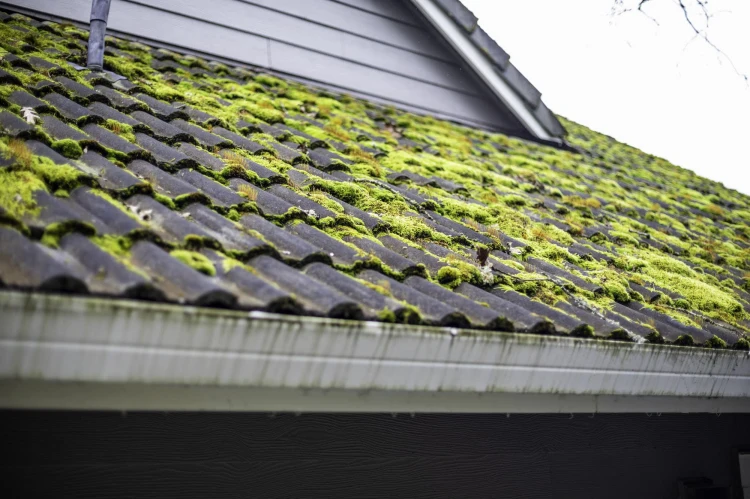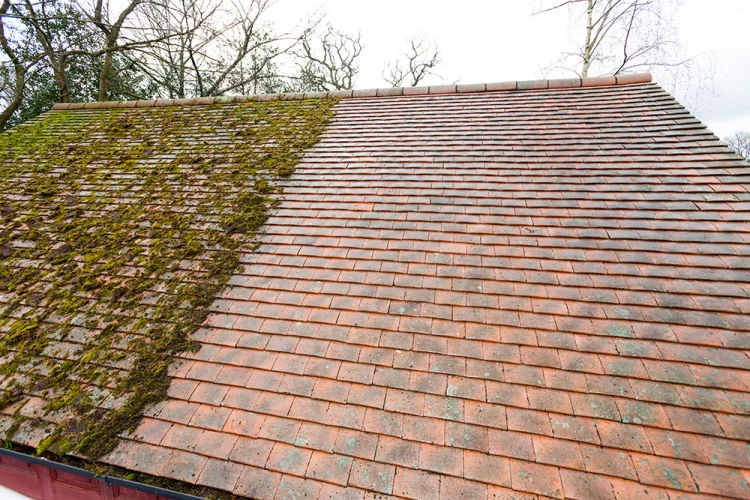The spread of moss on the roof is a common problem many people face. As fairy tale and romantic as it may seem at first glance, the spread of moss can seriously damage the condition of a roof. This is why we need to remove it and limit its spread. Fortunately, there are a variety of methods for dealing with moss, which we will share with you in the following lines. Keep reading to find out how to remove moss from a roof the easy way!
What are the Causes of Roof Moss?

Moss is found in almost all climatic zones. Wind can easily disperse its spores, causing them to germinate on different surfaces. Roofs are particularly suitable, as they are rough and uneven and in many places moisture and dust accumulate, which are the ideal conditions for moss growth. Furthermore, if your house is located near a river, a swamp or is in the woods, don’t be at all surprised at this rooftop sight – the spread of moss is completely understandable.
How can Moss Damage a Roof?

Moss can cause you a lot of problems. Initially, a thin layer will appear, which, if not removed, will grow, and can lift the tiles and damage the roof. As a result, leaks can occur and, in addition, moss creates an ideal environment for dust, other plants, and bacteria as well as ants, bugs and other insects to grow.
When is the Best Time to Remove Moss from a Roof?
To ensure the good condition of your roof, it is a good idea to remove the moss and clean it at least once or twice a year. Intermediate seasons such as spring and fall are the best for this purpose. In winter, hardly anyone would undertake this activity, and in summer, in too hot weather, the cleaners you use may evaporate very quickly and the effect may not be as good.
How to Remove Moss from a Roof?

You’ve already understood the importance of removing moss from your roof. But you need to do everything right, which includes taking some time to prepare proper work clothes, gloves, mask, non-slip shoes, and a safe ladder. Don’t underestimate the precautions you need to take.
In the first stage, you will need to remove the moss from the roof mechanically. It is best if you have someone else to help you. Use a garden hose or a pressure washer to wet the roof and remove some of the moss. The direction of the jet should be from the top to the bottom of the roof. Then use a long-handled, soft-bristled brush to further remove any moss and dirt still present. Take your time, work carefully and slowly.

Even after these actions, there may still be moss and dirt, so you have two options: to choose a chemical moss killer, which may however have an adverse effect on the surrounding plants (take measures to protect them), or to try a less toxic method, which is to make your own moss remover. One good option is to mix water and white distilled vinegar (e.g. apple cider vinegar) and the vinegar should take up 10 percent of the solution. For even better results, add bleach and soap solution. Leave the moss remover you’ve chosen on the roof for a while, and then rinse it off with water.
Take Preventative Measures
It’s definitely worth taking preventative measures to limit the appearance of moss and therefore not having to clean your roof often! A good option is to install copper strips which react with the water that is poured in when it rains and form a protective solution that kills the moss spores.
